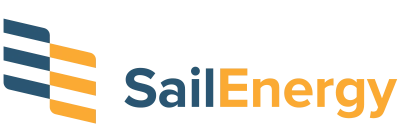Sail Energy was established in 2014 with a straightforward goal: to grow in the market for energy distribution through both organic and acquisition methods. This company has definitely grown quickly in recent years thanks to the expansion of services and trucks.
Sail Energy put together a seasoned management and financial advising team that has successfully led ten integrated roll-ups and over 100 acquisitions in this industry. In addition to New York and Pennsylvania, this company currently provides service to over 30,000 consumers across four New England states. It has 8 facilities, a fleet of 123 vehicles, and employs 171 drivers.
Scott Ireland, who has experience in safety management, joined Sail Energy as the company’s Safety and Compliance Manager with ambitious hopes to advance the business. One of the major projects Scott has undertaken is developing distinctive fleet maintenance processes. Thus, helping the company to keep expanding its clientele. We talked to him to find out what it’s like to work at Sail Energy now that they’ve integrated top-notch fleet management software systems.
The Challenge for Sail Energy: Inefficient Fleet Management
Before integrating Whip Around, Scott realized that the fleet’s maintenance process needed more organization. Many in the fuel and propane transport vertical know that minor dents and dings frequently go unnoticed until they cause bigger problems. Scott was well aware that this would be a problem in the long run.
Sail Energy had integrated Samsara into its fleet management process, accounting for 50% of the process. However, the safety team did not efficiently manage it. “Samsara was about 50% implemented but not managed,” admits Scott. During this period, Sail Energy averaged a safety score of 77%. This was very low according to company standards, and Scott realized that something had to change regarding using the platform.

The Solution: Integrating Whip Around Alongside Samsara
Sail Energy started looking for a better method to operate and achieve its strategic growth objectives. They looked for a fleet management platform that could help them standardize processes, enhance reporting, provide visibility for the safety and compliance team, and have the ability to integrate with Samsara. This business required a software solution to manage several fleet management services, particularly for inspections, monitoring, and maintenance.
The Safety and Compliance team at Sail Energy evaluated different fleet management software before deciding on Whip Around. This collaborative fleet management system would enable it to scale the company’s operations and expedite maintenance processes. It was a perfect fit for their fleet management needs as both Samsara and Whip Around had previously partnered for better and more efficient fleet management.
Sail Energy Today
Sail Energy was able to have its professional maintenance services teams use its chosen workflows and processes because it chose the most flexible fleet management software platform. This company still uses Samsara for driver monitoring, telematics, and dispatching. “Today, we use Samsara for driver behavior monitoring, telematics, and Co-Dispatch with Cargas and ADS,” Scott explains.
On the other hand, Sail Energy integrated Whip Around and now uses it for fleet inspections, truck servicing, and maintenance. “We use Whip Around for fleet inspections, service monitoring, and maintenance,” Scott admits.
The Results for Sail Energy: Prioritized Maintenance Needs, Improved Fleet Uptime, and Decreased Costs
Integrating both Samsara and Whip Around into their fleet management process produced startling results for Sail Energy. For instance, their safety score significantly improved after fully utilizing the platforms. “After mastering the system, I quickly achieved an above average score from 77% to over 95%,” Scoot adds.
The ability to prioritize the fleet’s maintenance needs has also been one of Sail Energy’s most significant gains. This led to lower costs as well as a longer fleet life. “During the rising gas prices of late, integrating with Samsara’s telematics to Whip Around has alerted us to potential fuel reduction with tracking of idling times on equipment. Identifying excessive idling is key to reducing costs. Creating Service Platforms to maximize maintenance efficiencies to extend life on our fleet,” explains Scott.
When asked about fleet uptime, it was evident that it had significantly improved. However, Scott was adamant in admitting that a few crimps needed to be worked out with the uptime telemetry. “Idling time dropped from the mid-forties to about 25% – 33% on a fleet goal of 22%. Still, there are some kinks to work out with the idling telemetry from the PTOs,” Scott stated.
Maintenance Cost Reduction
In terms of maintenance cost reduction, Sail Energy has seen an increase due to a large backlog of maintenance. However, Scott highlights that it is beneficial for the fleet in the long term. “Our maintenance costs are up because of the maintenance of backlog neglect. It is improving, and our fleet will be healthy in the long run,” he added. However, the company has seen a significant improvement in general cost reductions. This is due to better safety practices from fleet drivers. The company expects stellar results in cost reduction by the last quarter of the year.
“Our costs decreased through better economy from regulating the speeds at which drivers were going along with increased safety scores that were immediately formed into a Driver Incentive program that can actually put an extra $3,000 a year to a safety-performing driver. The reduction in incidents with the “cautious” attitude of the driving force will offset the program’s cost with lower insurance operating costs. I do not know how much yet, but I’m told that with the decrease in vehicle incidents, we should expect good results after this final quarter of 2022,” Scott explains.
When it comes to what stands out the most on the platform, the form flexibility is a sure hit. This flexibility allows Scott to customize forms based on the task, such as tracking mileage in other states. “What I’m especially proud of about WhipAround is the flexibility of the forms. I have developed forms in the platform that are market specific to track miles in other states, and DOT required inspections for LP Bobtails such as The Monthly Discharge System Inspection and Maintenance (Also known as a “Creep Test”) as an example.”
Sailing On: What’s Next for Sail Energy?
Samsara and Whip Around have been put in place to manage the upkeep requirements of a growing fleet of vehicles. Thus, freeing Scott up to concentrate on streamlining Sail Energy’s fleet management approach. “For me, I needed the Service Platforms to develop a standard that the entire organization could use seamlessly. All I had to do was “click” the link, and the app provided telematics to monitor the maintenance on the fleet. Very cool,” he added.
Whip Around Your Fleet Management Today
If fleet management bottlenecks are becoming an issue or causing expensive repairs and downtime, then why not schedule a Whip Around demo? Contact us today to explore how Whip Around can help you achieve your objectives this year, or speak with a product specialist.








